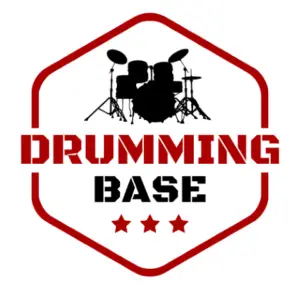Pitched vs unpitched instruments can be a confusing topic and many drummers are unsure of which category a cymbal falls into. In this article I’ll be explaining why cymbals are considered “unpitched percussive instruments” and why some cymbals have a higher/ lower pitch compared to others.
Cymbals: Pitched or Unpitched?
Cymbals are unpitched percussive instruments because they do not have a definitive pitch and are only designed to produce a sound of one kind of pitch unlike pitched percussive instruments (e.g. a xylophone) which can produce notes of multiple pitches.
Why are Cymbals Considered Unpitched?
First, let’s get a good understanding of what “pitch” is.
The pitch of a sound is its position in the complete range of sound. It describes how high or low that sound is.
When a note is played by an instrument, it produces a sound wave. Sound waves can have different frequencies which refers to the speed of the wave. The frequency of a sound is measured in Hz which is a measurement of the number of sound waves per second.
An note with high pitch, will have a sound wave with a higher frequency compared to an note with a lower pitch.

Pitched vs Unpitched Percussive Instruments
Okay, next let’s define what a “pitched” percussive instrument is.
A pitched percussive instrument is one that produces notes of one or more pitches. Examples of pitched percussive instruments include the xylophone, glockenspiel, timpani and marimba. If you hit different parts of these instruments, a different note will be played.
Cymbals on the other hand are considered unpitched or non-pitched percussive instruments. This means they do not have a definite pitch. In other words, they are designed to make one kind of pitch.
Other examples of unpitched percussive instruments include the snare drum, bass drum, triangle and maracas.

Cymbals Still Have a Pitch
So this is where the confusion usually stems.
A musical instrument can have a pitch, but still be classed as “unpitched”.
Cymbals are considered high-pitched instruments because the frequency of the soundwaves they produce is high.
Check out this table below to find out the fundamental frequencies of different types of percussive instrument. Remember, the higher the frequency, the higher the pitch of the sound is.
| Percussive Instrument | Frequency Range |
| Floor Tom | 60-80 Hz |
| Bass (Kick) Drum | 80-130 Hz |
| Rack Tom | 130-150 Hz |
| Snare Drum | 170-200 Hz |
| Crash Cymbal | 400-500 Hz |
| Ride Cymbal | 300-600 Hz |
| Hi-Hat Cymbal | 300-3000 Hz |
What Affects the Pitch of a Cymbal?
Not every cymbal is created equally and hence not every cymbal has the same pitch. The pitch of a cymbal is affected by its shape, size, thickness and weight. Let’s look at each of these factors individually.
Size
Here we’re talking about diameter.
A cymbal with a larger diameter will have a lower pitch than a cymbal with a smaller diameter. This is because the larger diameter of the cymbal causes the soundwaves to be slower. Slower soundwaves means the sound has a lower frequency, and hence a lower pitch.
Thickness and Mass
The thinner a cymbal is, the lower its pitch will be. Thicker cymbals are heavier and vibrate faster which means the soundwaves have a higher frequency and hence a higher pitch.
This is a confusing concept because with other instruments, such as guitars the opposite is true. For example, thicker guitar strings have a lower pitch. However, this is because the strings are attached to the guitar and are under tension.
A cymbal is allowed to vibrate freely because it is not under tension so the mass is allowed to directly affect the pitch.
Profile/ Taper
The taper or profile of a cymbal refers to the change in thickness from the bell to the edge of the cymbal. Assuming the mass and size of the cymbal stays the same, the flatter the cymbal is (less taper) the lower the pitch will be and the higher the taper is, the higher the pitch will be.
